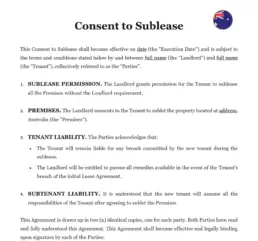Why Allowing Subleases Can Be Beneficial
Allowing subleases can provide flexibility for tenants who need to temporarily relocate or downsize without breaking their lease. For property owners, it ensures continuous occupancy and rental income. However, the process must be managed carefully to avoid legal complications and protect all parties involved. By understanding and following the correct legal steps, property owners can facilitate subleases smoothly and effectively.
Review the Lease Agreement
Before allowing subleases, thoroughly review the existing lease agreement. It typically contains specific clauses related to subleasing.
1. Sublease Clause: Look for a sublease clause in the lease agreement. This clause outlines whether subleasing is permitted and any conditions or restrictions that apply.
2. Approval Requirements: Determine if the lease requires written consent from the landlord before subleasing. Understanding these requirements helps in preparing the necessary documentation.
3. Restrictions: Note any restrictions, such as the duration of the sublease, the type of subtenant allowed, or any specific conditions that must be met.
Obtain Consent from the Landlord
If the lease agreement requires landlord approval for subleasing, obtaining this consent is a critical step.
1. Formal Request: The tenant should submit a formal request to the landlord, detailing the reasons for subleasing and providing information about the potential subtenant.
2. Information About the Subtenant: Include comprehensive details about the subtenant, such as their employment status, rental history, and references. This reassures the landlord of the subtenant’s reliability.
3. Meeting with the Landlord: Arrange a meeting with the landlord to discuss the sublease request in person. This helps address any concerns they may have and facilitates a smoother approval process.
Conduct Due Diligence on the Subtenant
Property owners should ensure the subtenant is suitable and capable of fulfilling the lease obligations.
| ➤ Financial Assessment: Evaluate the subtenant’s financial stability by reviewing their income, employment status, and credit history. This ensures they can meet rent payments and other financial commitments. |
| ➤ Rental History: Investigate the subtenant’s rental history by contacting previous landlords. Positive references can provide reassurance of their reliability. |
| ➤ Background Check: Conduct a background check to identify any potential red flags, such as a criminal record or previous evictions. |











